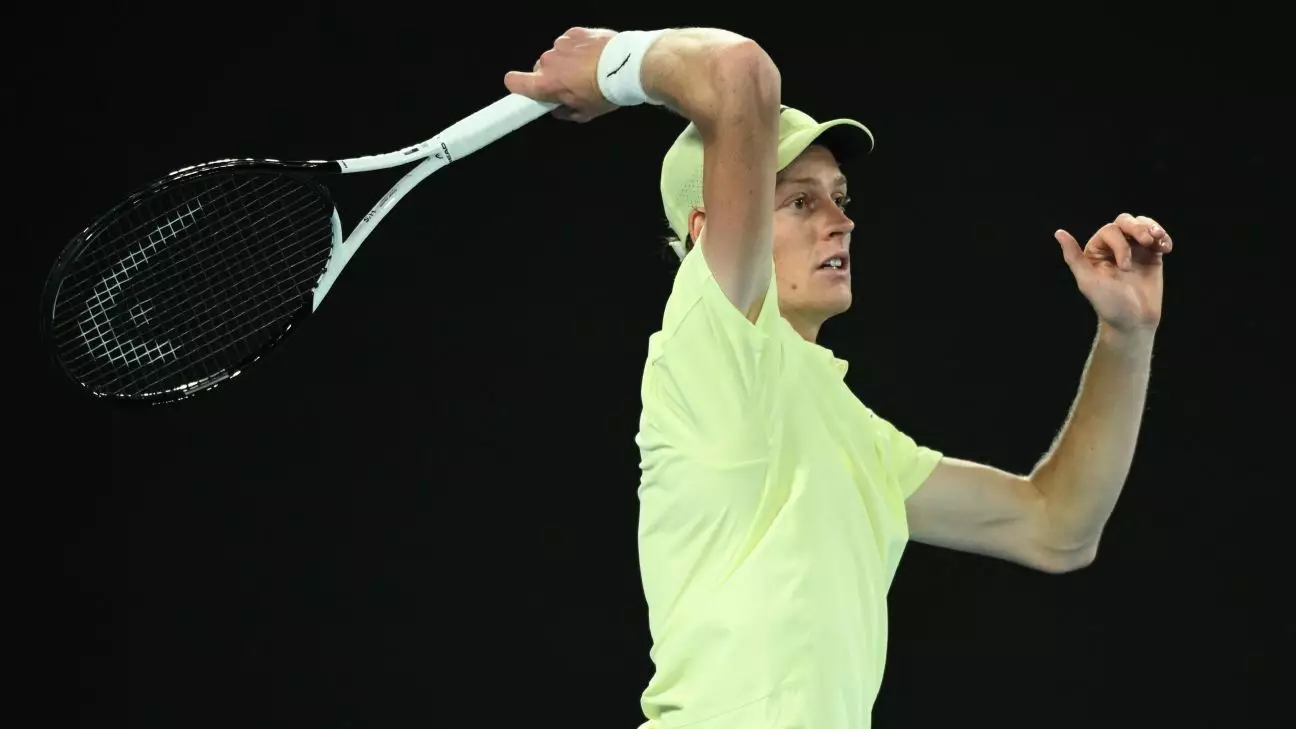The world of professional tennis is no stranger to controversies, but the recent case involving Jannik Sinner has ignited a conversation that delves deeper into the integrity of the sport. Sinner, a rising star in the tennis realm, found himself under scrutiny after facing a three-month doping ban stemming from an anabolic agent, clostebol, inadvertently entering his system through massages. This incident did not just impact Sinner but sent shockwaves throughout the tennis community, prompting an uproar among fellow athletes regarding vulnerability to inadvertent doping violations.
Sinner’s situation raises critical questions about the efficacy and fairness of the anti-doping framework that governs the sport. While some may argue that Sinner was dealt with leniency due to his fame and promise as a player, the broader implication points toward a need for improved clarity and support for all athletes. As players flock to authorities like the International Tennis Integrity Agency (ITIA) for guidance, it becomes apparent that the anxiety surrounding doping regulations is palpable. The heightened awareness after such high-profile cases underscores the precarious line athletes walk when managing their health and dietary supplements.
Call for Greater Resources and Transparency
The response from the ITIA, claiming an increase in requests for advice from players, signifies an urgent need for resources that allow athletes to navigate anti-doping rules with confidence. It has become painfully obvious that misinformation surrounding supplements and medications could derail an athlete’s career for what may be an innocuous mistake. The ITIA’s commitment to educating and assisting players and coaching staff is praiseworthy but raises another concern—are we doing enough to ensure the well-being and integrity of competitors across the board?
Players have expressed dissatisfaction with their protection under the current structure, voicing fears that inconsistencies in penalties could lead to further injustice. The case of Iga Swiatek, who received a month-long ban for a similar offense, adds to the feeling of discontent as athletes ponder whether there is an unequal application of rules. Serena Williams articulated her frustration beautifully when she remarked on how her career would have faced catastrophic ramifications had she been in Sinner’s position. Such disparities can undermine the foundational principles of fair play and trust that are essential in competitive sports.
The Heavy Weight of Public Scrutiny
As Sinner gears up for his return to competitive play, he carries the weight of public opinion along with the expectations of fans and peers alike. The reality is that returning from a ban is never straightforward; the player must navigate both on-court performance and off-court distractions. There’s an air of skepticism among fans and fellow athletes about the integrity of the sport, and though Sinner maintains his innocence, it is a tough road ahead filled with the consequences of public perception.
Rafael Nadal’s perspective emphasizes an interesting facet of the conversation: Sinner should be allowed to focus solely on tennis and move forward, but can he truly escape the controversy that has surrounded him? The existences of latent doubts linger long after a resolution has been reached, indicating that reputations can be irreversibly tarnished despite a player’s declared innocence. This bears striking implications for Sinner’s journey back into the top levels of competition. Rather than welcoming him back as a champion, the narrative shifts to scrutinizing his every move, potentially overshadowing his undeniable talent.
Addressing the Systemic Dangers
Doping cases like Sinner’s compel us to examine the systemic flaws that enable confusion and chaos in anti-doping regulations. The apparent contrast in disciplinary actions meted out to different players—considering their status, background, or previous history—illustrates an urgent need for reform. The tennis world must advocate for consistency in treatment to avoid creating a breeding ground for distrust among athletes.
Players, coaches, and support staff collectively face the responsibility of not only their own compliance but ensuring the broader community is informed and educated about what constitutes a violation. By unifying efforts to bring clarity to this substantial issue, the tennis fraternity stands to not only protect its stars but to foster an environment of transparency that upholds the dignity of the sport.
The stakes have never been higher for the sport, and as it seeks to move forward amid challenges, the necessity for comprehensive education on doping regulations cannot be ignored. The recent events have opened a dialogue that must not only address past grievances but carve out a path where athletes’ integrity — and the integrity of tennis itself — remains unblemished.

